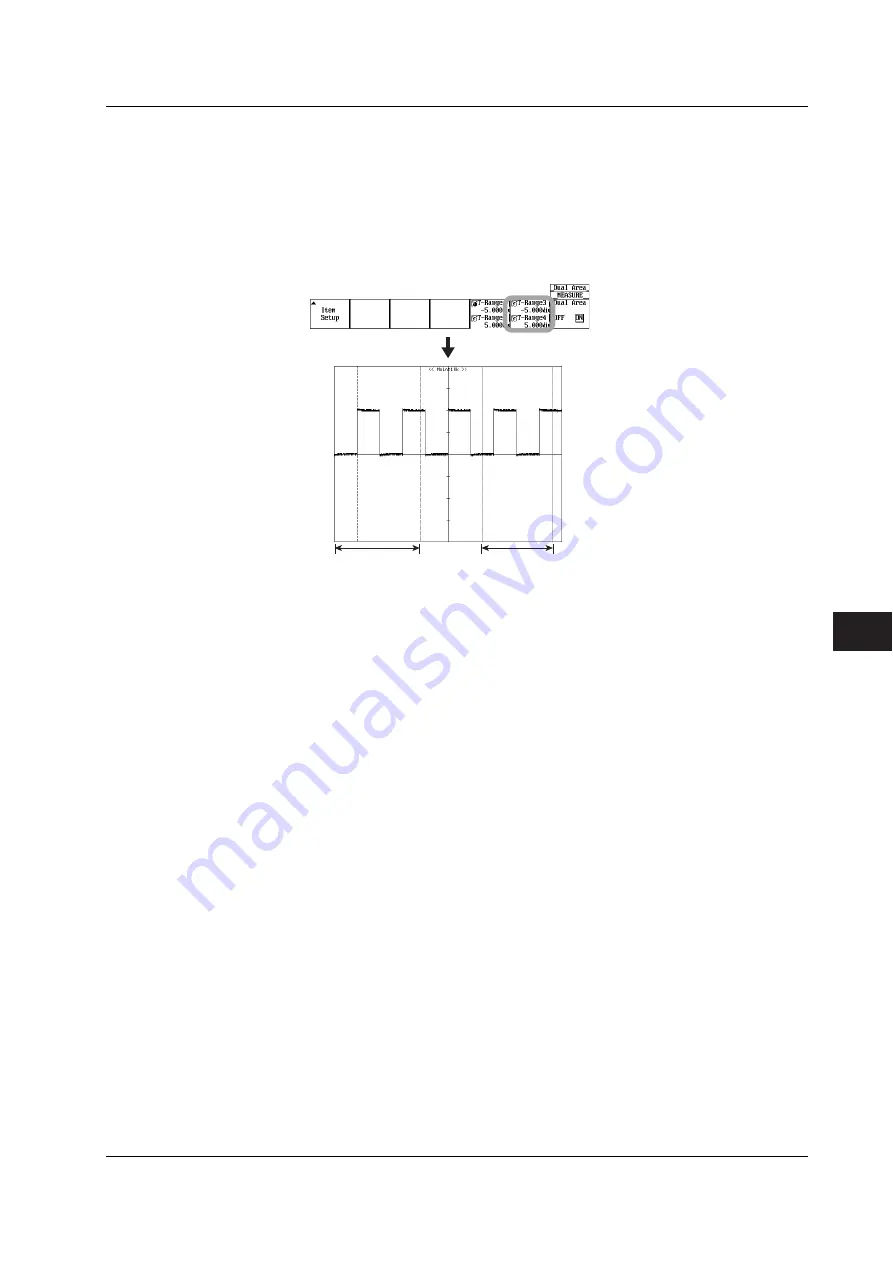
10-57
IM 701730-01E
Analyzing and Searching Waveforms
10
Setting the Measurement Range Area2 of the Second Measurement Parameter
13.
Press the
T-Range3/T-Range4
soft key to set the jog shuttle control to T-Range3,
T-Range4, or both T-Range3 and T-Range4.
•
If you select T-Range3, you can move T-Range3.
•
If you select T-Range4, you can move T-Range4.
•
If you select both T-Range3 and T-Range4, you can move T-Range3 and T-Range4
horizontally without changing the spacing between the two. The value of the digit being
specified by T-Range3 changes.
Measurement range
Area1
Measurement range
Area2
14.
Turn the
jog shuttle
to set the Area2 measurement range.
Setting the Distal, Mesial, and Proximal Values and High and Low Values
15.
The procedure is the same as steps 22 to 32 on page 10-43 to 10-44.
Explanation
This section explains the setup procedures for performing automated measurement of
various measurement parameters (waveform parameters) on dual areas simultaneously
or performing computation using the measured values on the displayed waveform (within
the display record length, see appendix 1).
Limitations
Automated measurement of waveform parameters cannot be performed on the following
waveforms.
• Snapshot waveforms
• Accumulated waveforms (however, measurement is possible on the accumulated
waveform acquired last).
Automated Measurement Mode
The following modes are available in automated measurement of waveform parameters.
To perform automated measurement of waveform parameters on dual areas, select ON,
Statistics, or History Statistics mode.
OFF: Automated measurement is not performed.
ON:
Measures the specified parameters.
Statistics, Cycle Statistics, and History Statistics:
Performs statistical processing on the measured results of the specified
parameters. See section 10.7. However, measurement and statistical processing
of Cycle Statistics cannot be performed using automated measurement of
waveform parameters on dual areas.
10.8 Performing Automated Measurements of Waveform Parameters on Dual Areas






























